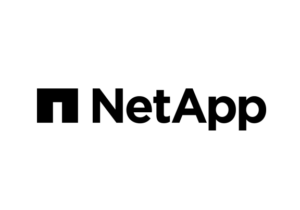
(cybrain/Shutterstock)
Maintaining AI fashions fed with information has change into a problem as the dimensions of knowledge and the dimensions of fashions each get larger. One firm hoping to maintain prospects on the fitting aspect of this colossal curve is NetApp, which yesterday unveiled an replace to its StorageGRID object retailer system that it says brings as much as a 20x enhance in throughput for AI coaching workloads.
StorageGRID is NetApp’s S3-compatible object storage system that’s used to retailer giant quantities (suppose tens of petabytes to exabytes) of unstructured information for giant information, superior analytics, and AI workloads. The item retailer might be paired with NetApp’s ONTAP information administration software program to create a unified, software-defined storage infrastructure that works throughout clouds and on-prem, together with NetApp’s conventional NAS units.
Reaching throughout information silos to fetch information is one factor, however having the ability to ship the fitting piece of knowledge to the processor on the proper time is one thing else. Object shops aren’t normally recognized for velocity and efficiency, however contemplating the petabytes and exabytes that prospects are storing as of late, it’s the one sort of system that meets the dimensions wants.
Vishnu Vardhan, senior director of product administration for NetApp, explains how the corporate delivered a throughput enhance in StorageGRID 12.0.
“Quick entry to object storage is clearly a necessity within the new world of AI, and NetApp is dedicated to serving to you obtain it,” Vardhan wrote in a September 9 weblog publish. “To this finish, StorageGRID implementation has advanced to an inside ring and an outer ring structure.”
StorageGRID’s inside ring is designed for prime velocity and low latency, whereas the outer ring favors excessive capability, excessive throughput, and excessive availability. The inside ring might be related to a selected GPU cluster and ship “near-line-rate efficiency,” Vardhan writes, whereas the outer ring might be related to a number of GPU clusters concurrently.
Whereas caching methods are complicated to deploy and harm information integration, they convey advantages that overcome these disadvantages. With StorageGRID 12.0, NetApp is introducing a brand new caching layer that’s designed to enhance how information flows throughout the product.
In line with Vardhan, the brand new caching layer delivers as much as 10 occasions the efficiency of present NetApp StorageGRID home equipment. “This efficiency might be additional scaled up by operating the caching layer on a bare-metal StorageGRID node, enabling you to customise the server to satisfy your particular wants,” he writes. This, ostensibly, is how NetApp obtained to the 20x determine it cited within the announcement.

(l i g h t p o e t/Shutterstock)
This launch additionally brings capability will increase. Clients can now help as much as 600 billion objects, which is double the earlier restrict. Strong state clusters can now helps 122TB QLC drives, which doubles the capability and density of StorageGRID deployments, and likewise boosts efficiency.
Along with the efficiency enhance, the exa-scale object retailer improve is slated to convey extra advantages for AI workloads, together with help for branching buckets and quick cloning of knowledge. NetApp says it will enhance testing and growth workflows, thereby enabling prospects to extra rapidly iterate their AI initiatives.
The branching buckets characteristic will enable builders to make on the spot copies of huge buckets containing billions of objects and petabytes of capability, function on these buckets independently of one another, and reconcile modifications between buckets, Vardhan says. These S3 buckets might be created almost immediately and take up no extra area, he says.
“One of many long-standing axioms in AI/ML is that ‘altering something modifications the whole lot,’” Vardhan writes. “That’s why information might be much more important than code within the realm of AI. And whereas there are well-established mechanisms to model code, it’s a lot more durable to model information. Both current instruments don’t scale, they modify the information format, or they modify the way in which that functions are anticipated to work together with storage.”
Admins will recognize the development to StorageGRID’s logging capabilities, in addition to the potential to automate drive firmware updates throughout all nodes, which ought to simplify upkeep duties. StorageGRID 12.0 additionally brings safety updates, together with help for AES GCM encryption, integrity checking, and default blocking for SSH ports.
Associated Gadgets:
Information Administration Will Be Key for AI Success in 2025, Research Say
NetApp Spots a Information Platform Alternative within the Cloud
NetApp Report Reveals Pressing Want For Unified Information Storage

